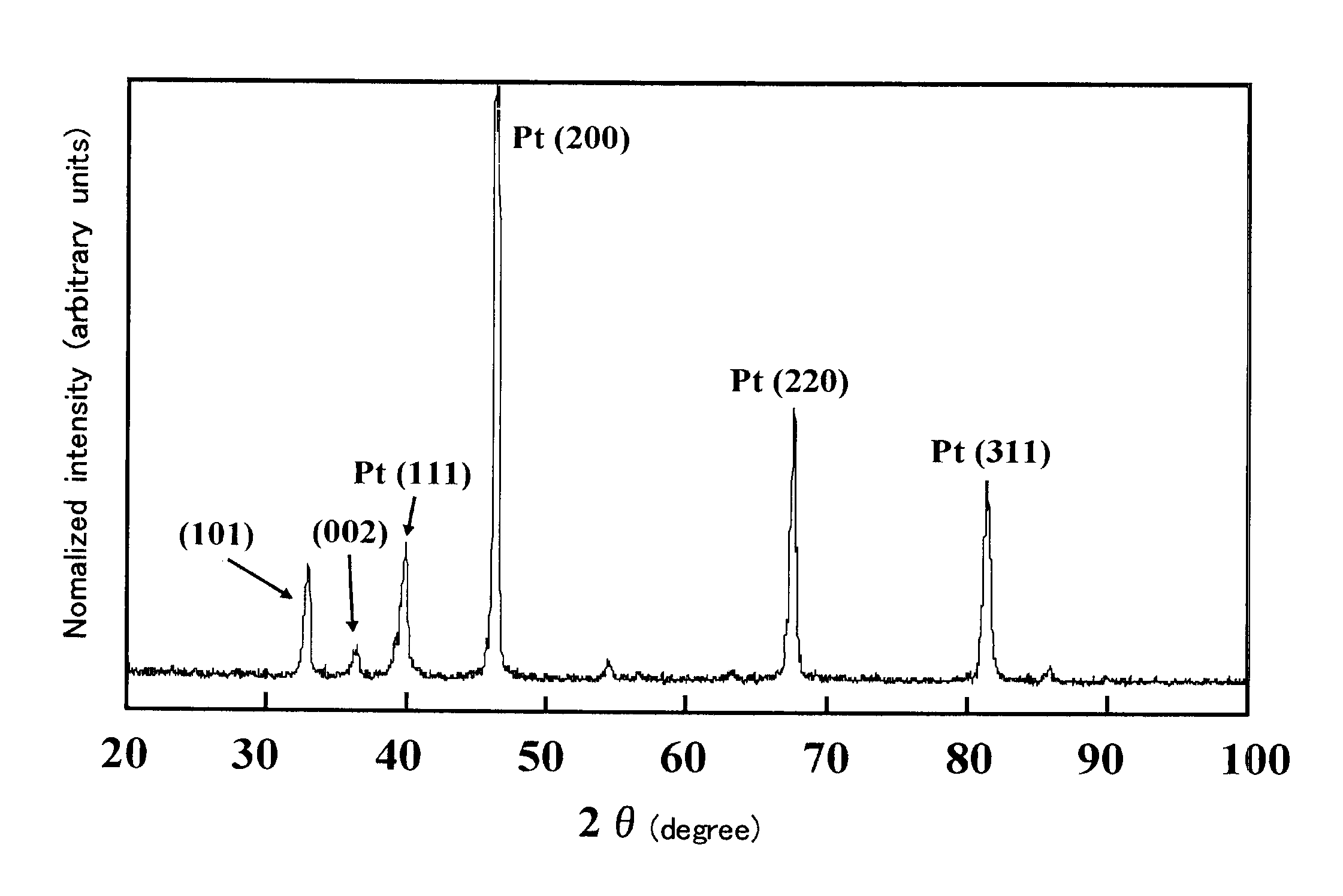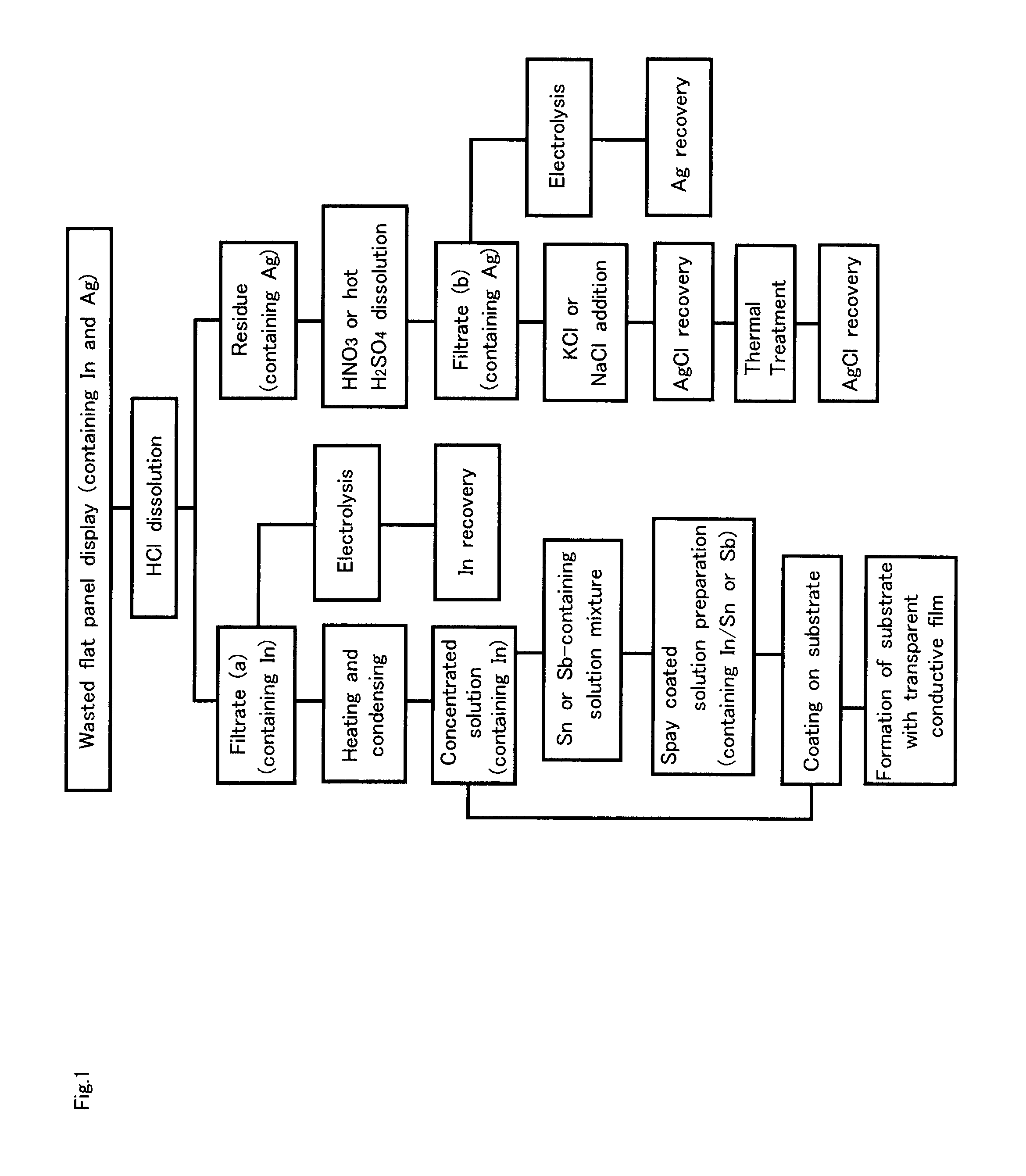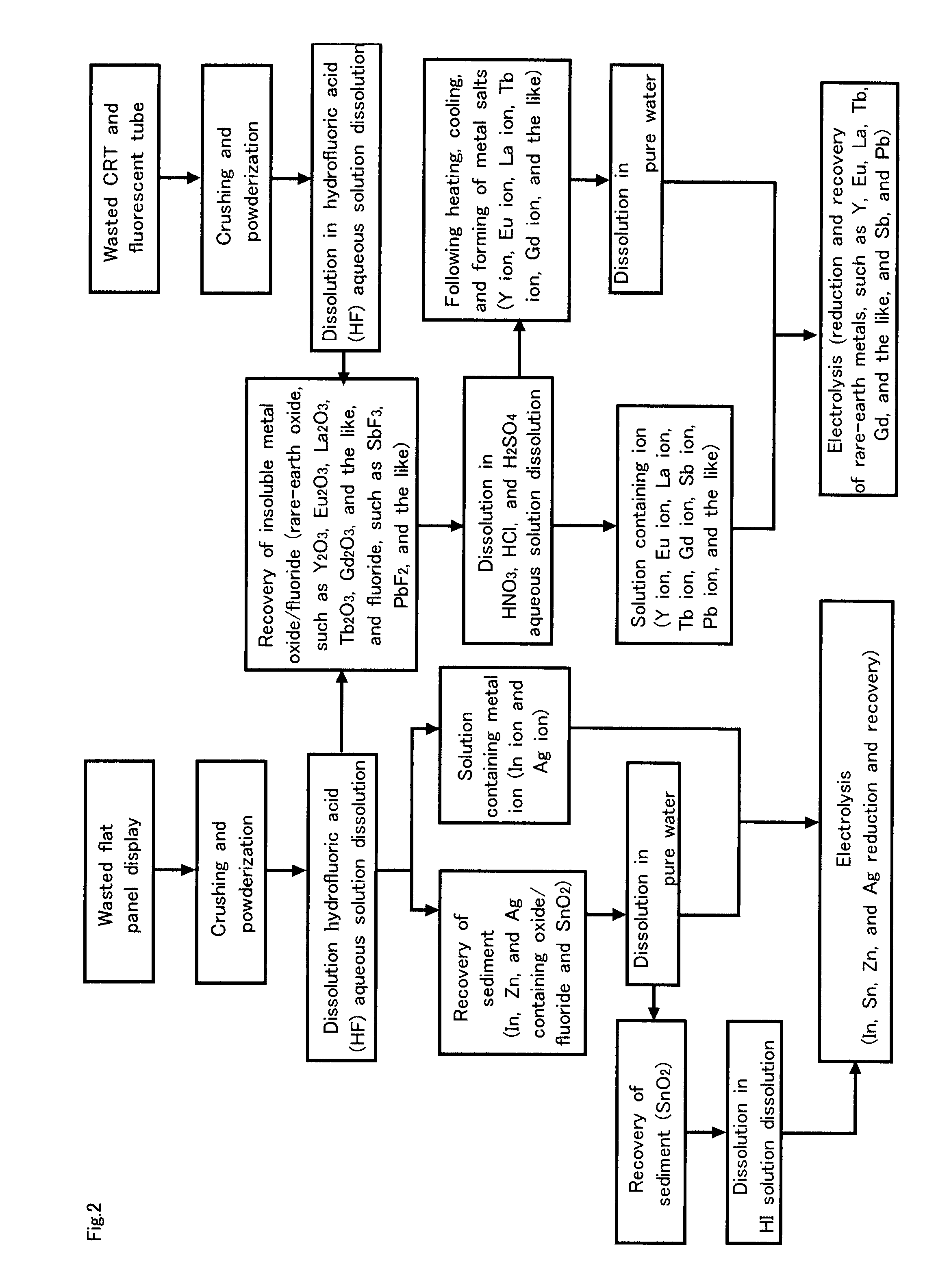Method of recycling useful metal
- Summary
- Abstract
- Description
- Claims
- Application Information
AI Technical Summary
Benefits of technology
Problems solved by technology
Method used
Image
Examples
first embodiment
Recovery of Indium and Tin from Transparent Electrode (ITO) (FIG. 2 and FIG. 25)
[0091]The present embodiment mainly relates to claims 1, 2, and 3.
[0092]2 is not Contained)>
[0093]According to the present embodiment, with due consideration given to the fact that a transparent electrode (ITO) contains indium oxide (In2O3) and tin oxide (SnO2), the degree of solubility of In2O3 and SnO2 in a hydrofluoric acid (HF) aqueous solution was examined.
[0094]First, the solubility when indium oxide (In2O3) was dissolved in a hydrofluoric acid (HF) aqueous solution of semiconductor grade was examined. Pure water was added to an HF solution with 49% HF concentration by weight. HF concentrations ranged from 10% by weight to 49% by weight. In2O3 powder with a purity of 99.99% was dissolved in a 100 g hydrofluoric acid (HF) solution. The degree of solubility at 24° C. was examined. The results thereof are shown in FIG. 4. In regards to processing of In2O3 films, generally, aqua regia consisting primar...
second embodiment
Recovery of Zinc from Zinc Oxides for Transparent Electrode
[0109]The present embodiment mainly relates to claims 1, 2, and 3, and describes a method for recovering zinc from zinc oxides, the use of which as an alternative metal to indium for transparent electrodes is underway.
[0110]2 is not Contained)>
[0111]First, the solubility of ZnO in an HF solution was examined. The HF concentration was adjusted by adding pure water to a hydrofluoric acid (HF) solution of semiconductor grade with 49% HF concentration by weight. The degree of solubility when ZnO (purity: 99%) powder at 24° C. was dissolved in a 100 g HF solution was examined. The result thereof is shown in FIG. 10. According to FIG. 10, ZnO was revealed to be soluble in an HF solution. As HF concentration increased, the degree of ZnO solubility increased. The maximal HF concentration was 40% by weight. When the HF concentration was further increased, the degree of solubility tended to decline. That is to say, according to FIG. 1...
third embodiment
Recovery of Rare-Earth Metals, Such as Yttrium, Europium, Lanthanum, Terbium, and the Like from Fluorescent Materials
[0118]The present embodiment mainly relates to claims 4, 6, and 7.
[0119]First, the solubility of yttrium oxide (Y2O3), europium oxide (Eu2O3), lanthanum oxide (La2O3), and terbium oxide (Tb4O7), which are heavily used for fluorescent materials, in an HF solution was examined.
[0120]As an acidic aqueous solution, an HF solution of semiconductor grade of 49% concentration, a nitric acid aqueous (HNO3) solution of 10% concentration, a sulfuric acid aqueous (H2SO4) solution of 10% concentration, and a hydrochloric acid (HCl) solution of 10% concentration were used. Y2O3 powder of 99.99% purity, Eu2O3 powder of 99.9% purity, La2O3 powder of 98.0% purity, and Tb4O7 powder of 99.95% purity were dissolved in separate samples of the a 100 g solution mentioned above at 24° C. The solubility in such cases are indicated in Table 1.
TABLE 1Solubility (g)Y2O3Eu2O3La2O3Tb4O7HF solutio...
PUM
 Login to View More
Login to View More Abstract
Description
Claims
Application Information
 Login to View More
Login to View More - R&D
- Intellectual Property
- Life Sciences
- Materials
- Tech Scout
- Unparalleled Data Quality
- Higher Quality Content
- 60% Fewer Hallucinations
Browse by: Latest US Patents, China's latest patents, Technical Efficacy Thesaurus, Application Domain, Technology Topic, Popular Technical Reports.
© 2025 PatSnap. All rights reserved.Legal|Privacy policy|Modern Slavery Act Transparency Statement|Sitemap|About US| Contact US: help@patsnap.com



